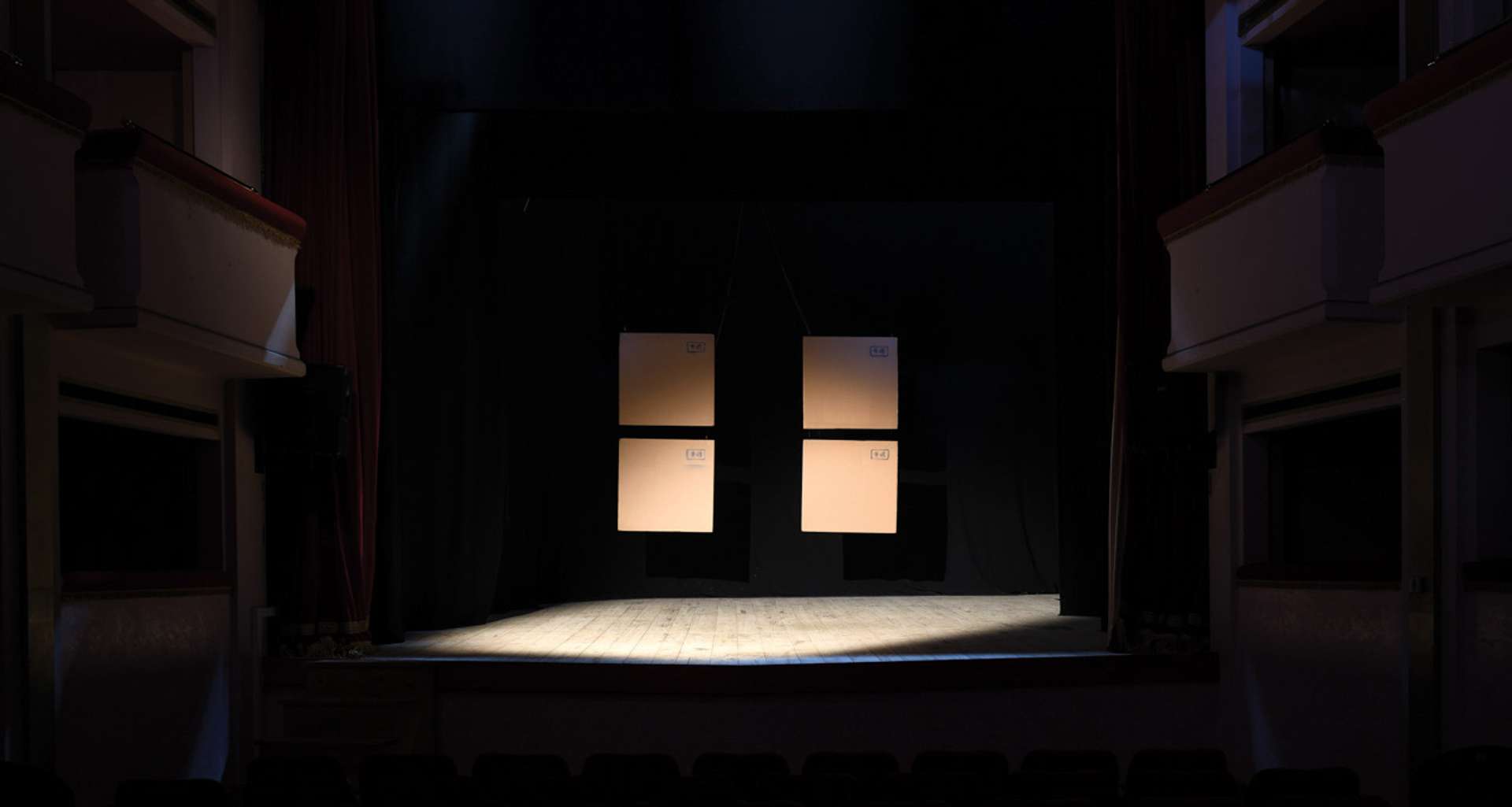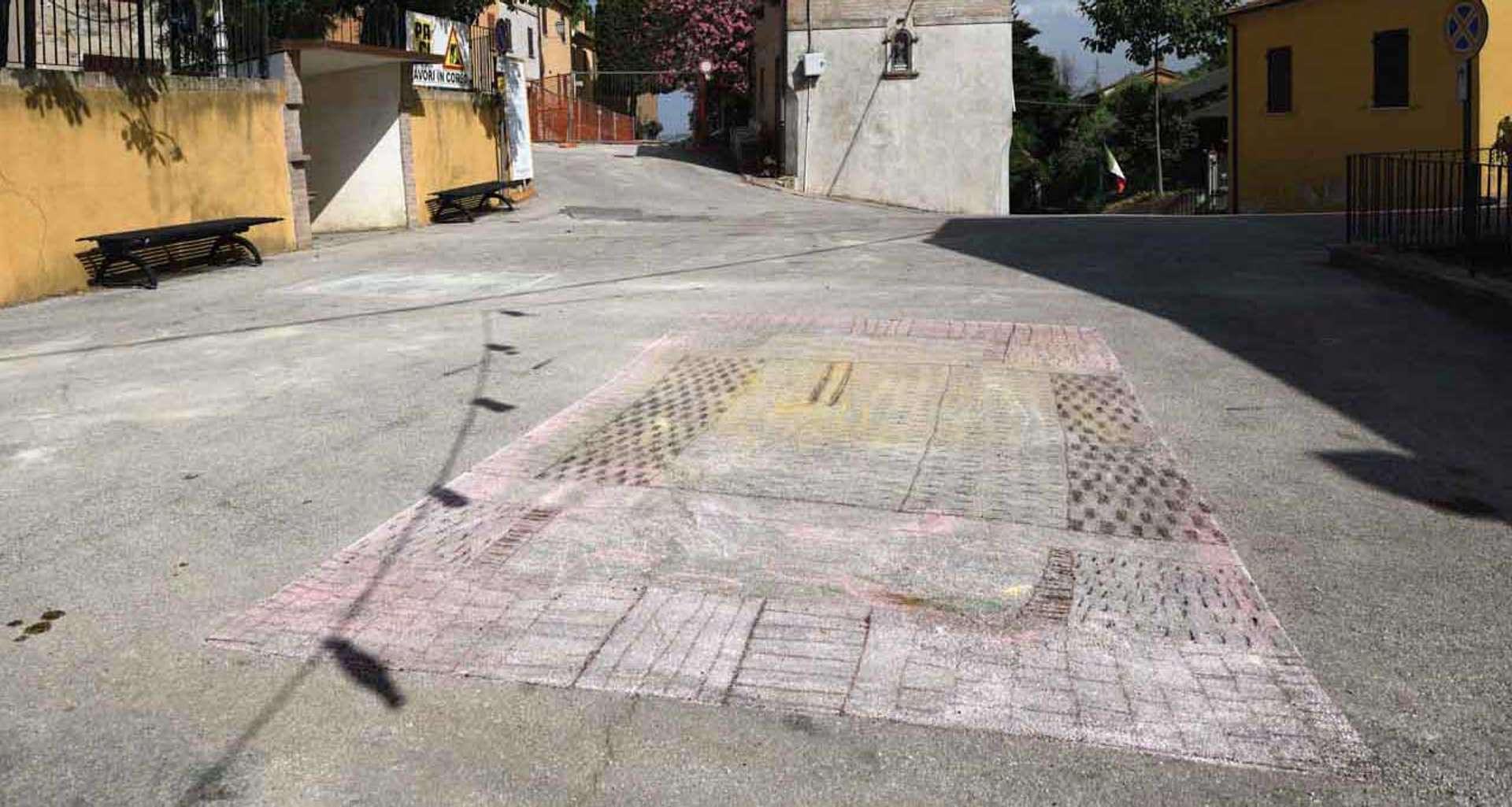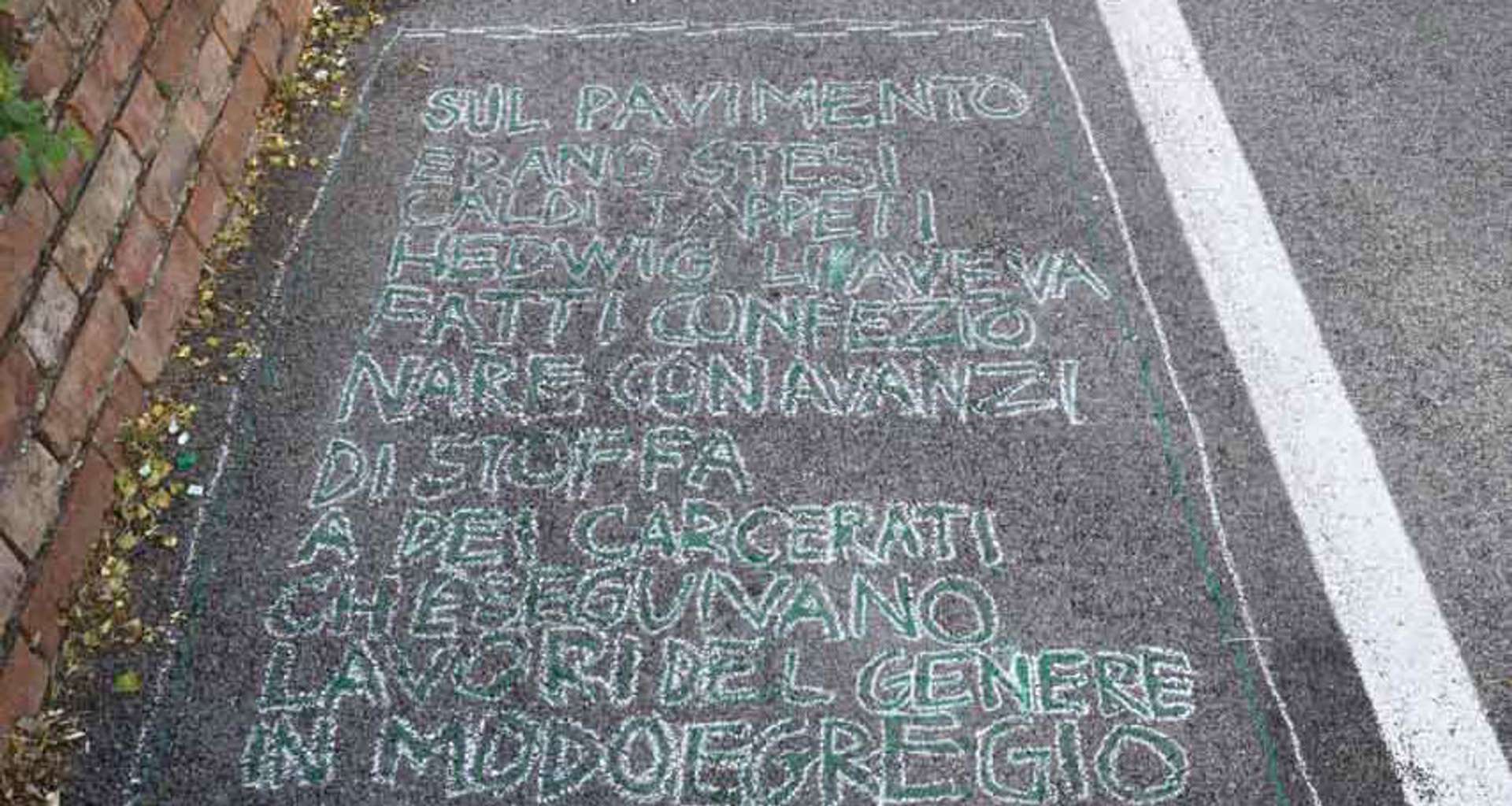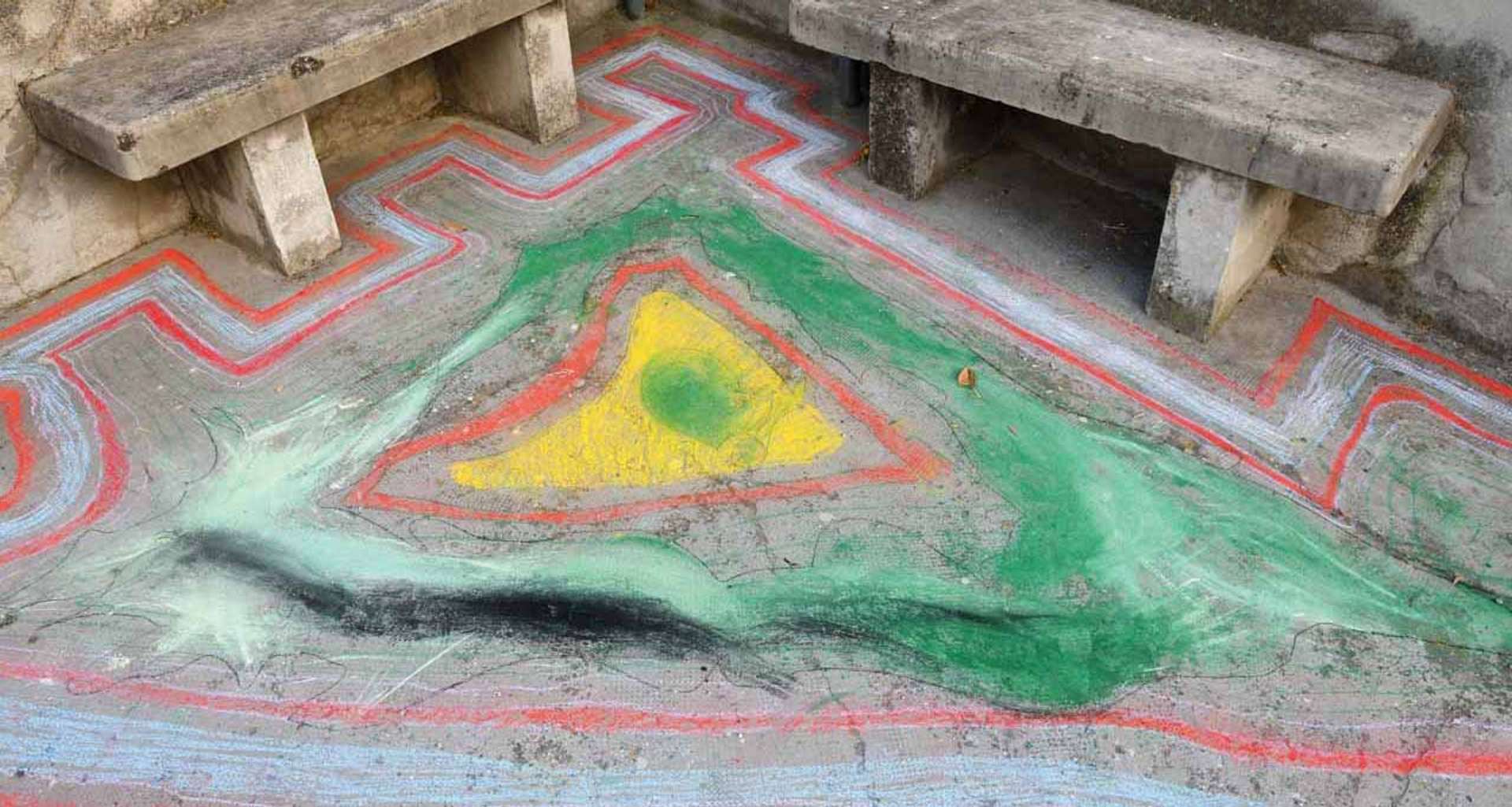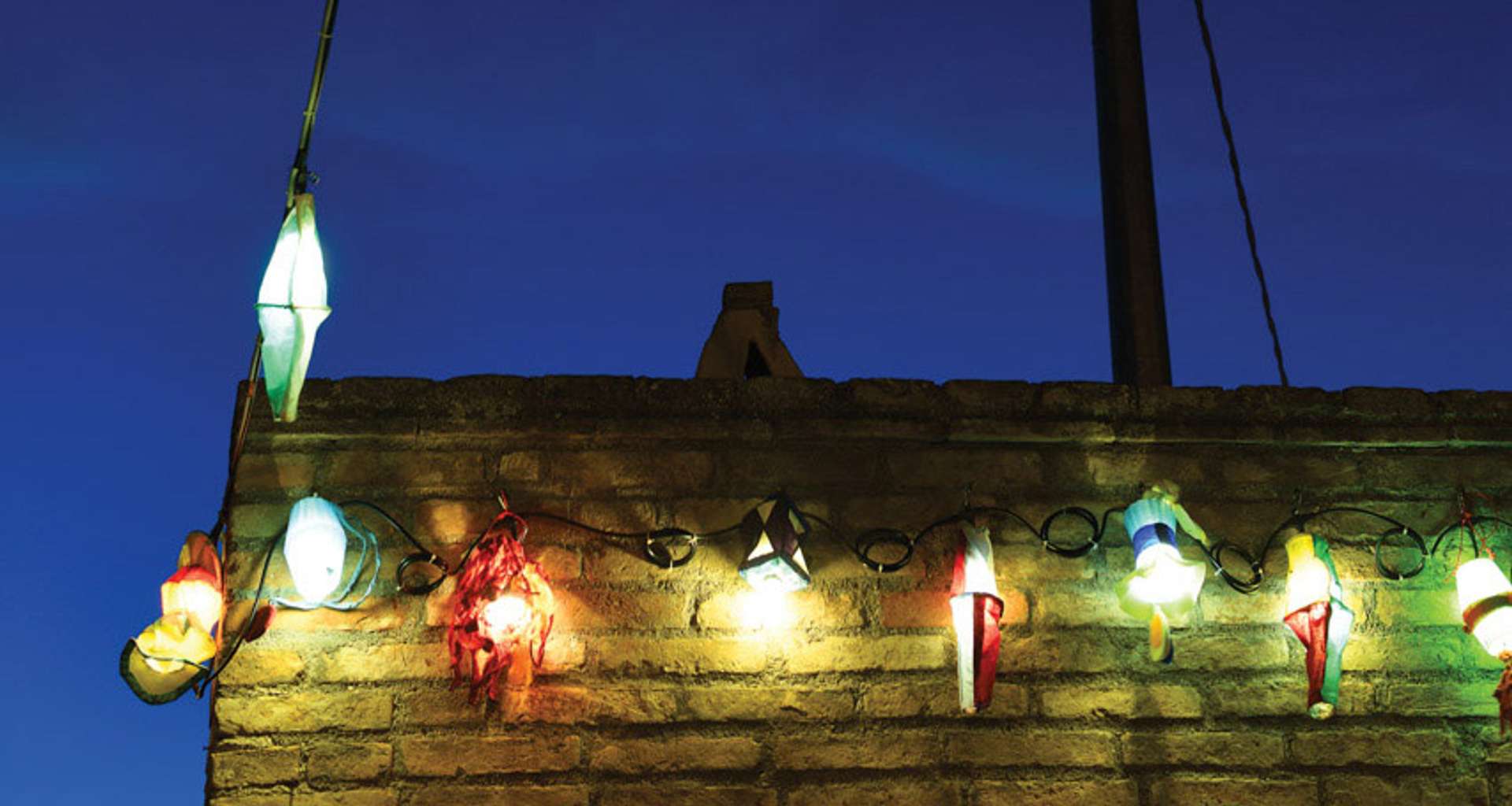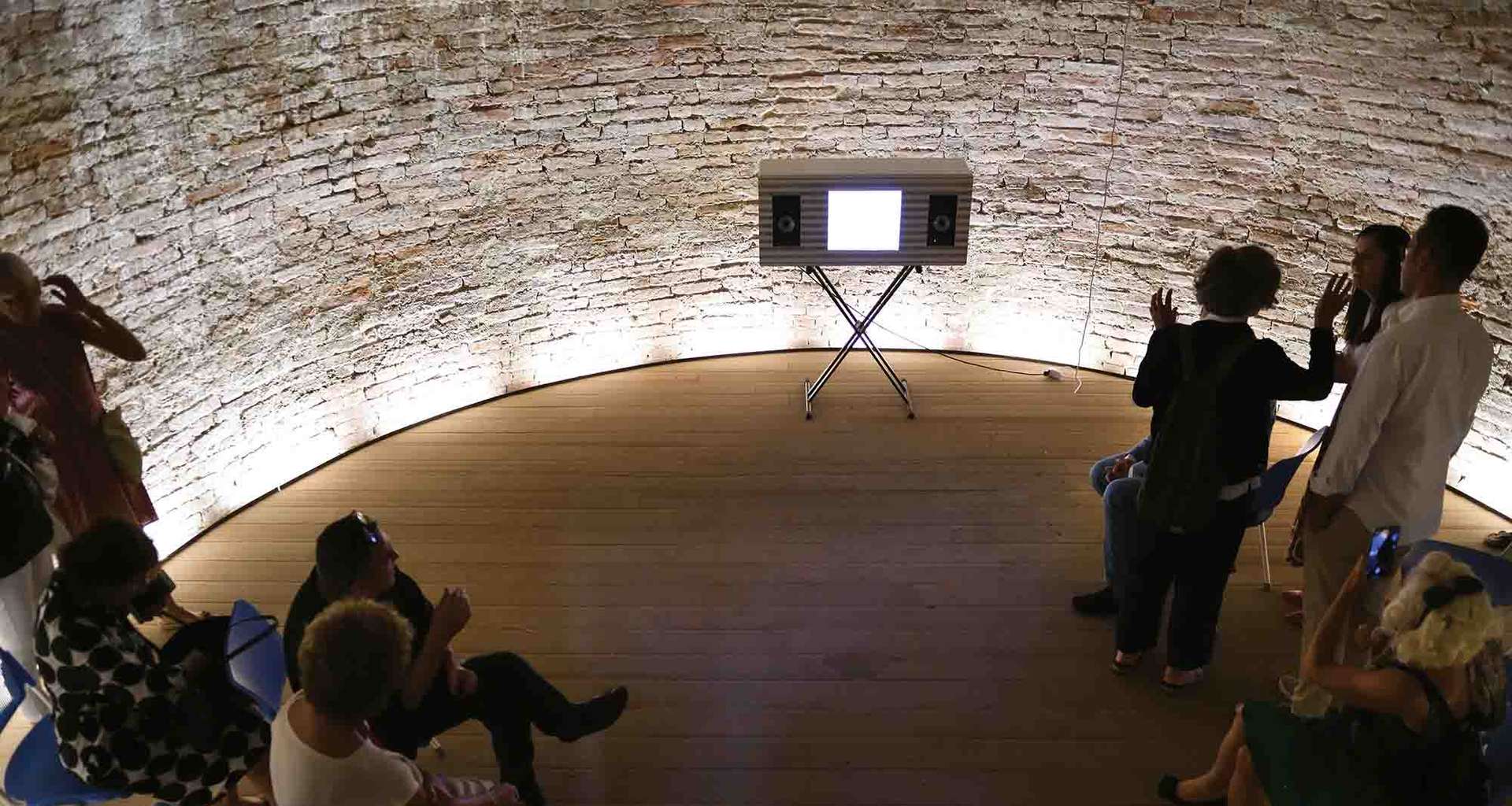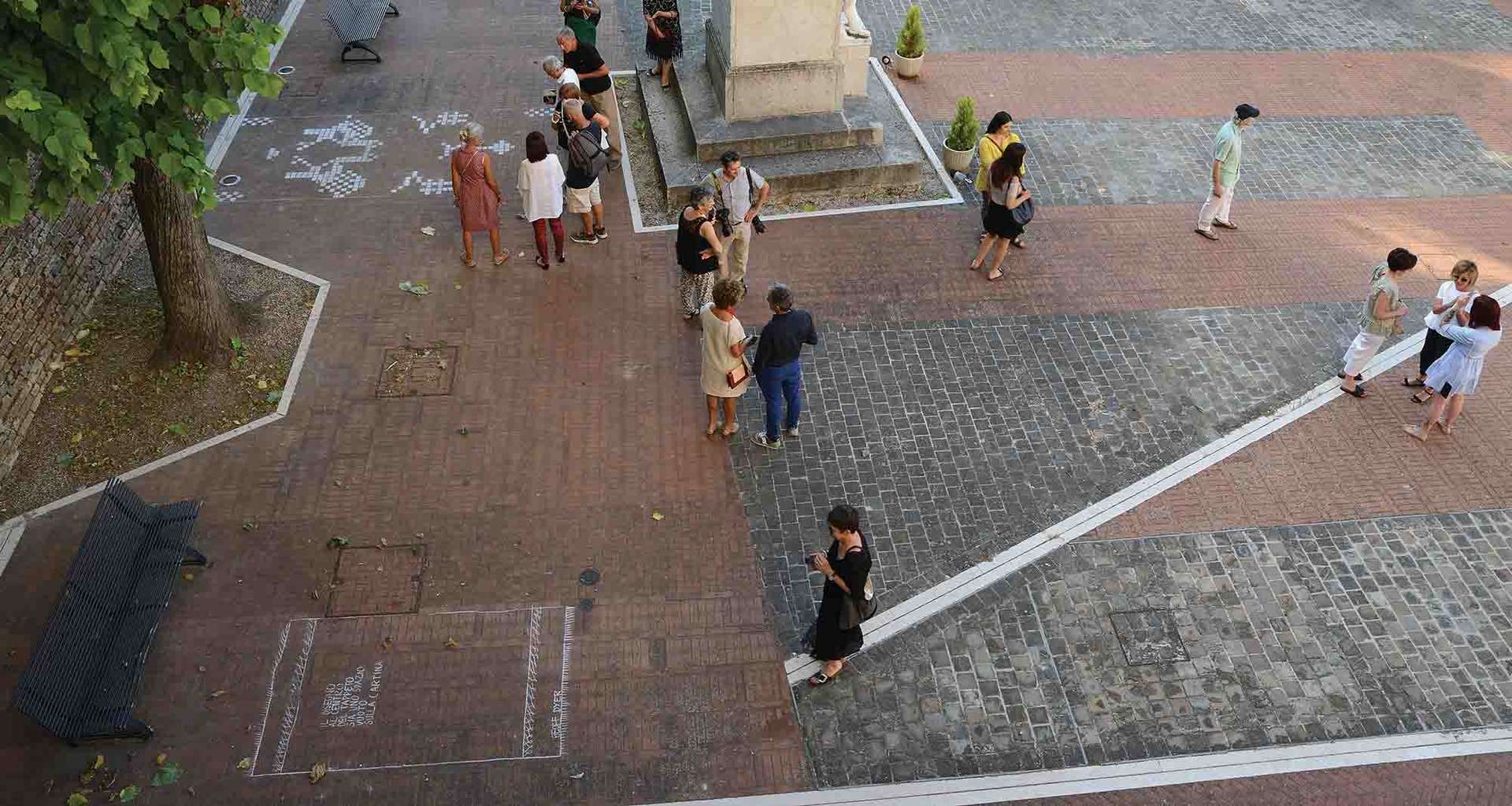The project of Eva Marisaldi in the village of San Costanzo is a widespread intervention that brings vitality to some points in the area. The exhibited works have been realized in collaboration with Enrico Serotti, partner and maker of several automatic sound instruments. A first group of works is installed at Teatro Della Concordia, a symbolic place of the local community from which is possible catch a glimpse of the sea. These are two plastic-sound works 3000 pagine, installed in the stage, reproduces the sound of 3000 pages flipped in unison, recorded in an action directed by a conductor.
In the foyer there’s Canti, an unpublished video work shot in some construction sites in the municipality of San Costanzo. The music composed through a dedicated software starting from sounds produced by robotic objects, is the first acoustic aid that accompanies the deafening activities of the construction site. A few steps from the theater, in the Northeast tower, we are greeted by a sound coming from the depth of a well, the title of the opera is Analfabeta and reproduces the splash of books dropped down. Entering the military building there is a snowfield where the work Democratic psychedelia generates different graphic animations and different sound structures through an audiovisual device.
A few kilometers from San Costanzo, in the hamlet of Stacciola, the space in front of the municipal oven supports the installation Lanterne per Stacciola composed of about 30 meters of fabric lamps manufactured by the artist. The work contributes to the festive atmosphere and highlights a – perhaps lost – social heritage, or respect for the sharing represented by the municipal oven, the community.
The exhibition is articulated in several visual “carpets”, designed with chalks, as in the practices of street artists. They are ephemeral works, subject to the weather, to the summer showers. During Una Boccata d’Arte the youngest inhabitats will be involved to give color back to the faded designs. Like a large urban tapestry, these drawings connect the interventions of Eva Marisaldi in the places of San Costanzo, Cerasa and Stacciola.
THE WORKS THAT FORM THE EXHIBITION ITINERARY ARE CREATED IN COLLABORATION WITH ENRICO SEROTTI, PARTNER OF THE ARTIST AND BUILDER OF VARIOUS AUTOMATIC SOUND INSTRUMENTS
The work of Eva Marisaldi (Bologna, 1966) focuses on the modalities of communication and language, and on the rules that influence our behaviour. She uses different media such as drawing, photography, sculpture, video, installations, kinetic art and performance to decode, in an almost anthropological way, what lies behind conventions. She studied at the Academy of Fine Arts and DAMS in Bologna, where you made your debut in 1988 at the “Biennale dei giovani artisti dell’Europa Mediterranea” or “Biennial of Young Artists in Mediterranean Europe”.
She has presented her work in many international exhibitions, including the Venice Biennale (1993), Istanbul Biennale (1999), Venice Biennale (2001), Sonsbeek 9, Arnhem (2001), Happiness, Mori Art Museum, Tokyo (2002 ), Lyon Biennale (2003), Alexandria Biennale (2003), G3, Vira (2003), Sevilla Biennale (2004), Gwangju Biennale (2004), Quadriennale in Rome (2005), two special projects for Art Basel (Basel, 2001 , Miami, 2007), Italy 1980 – 2007, Hanoi, (2007), It’s not over yet, New York (2008), Piazze di Roma, MOCA, Shanghai (2010), No Soul for Sale, Tate Modern, London (2011 ), Documenta, Kassel (2012), Think Twice, Whitechapel, London (2012), Do it, Prishtina (2014), Time is thirsty, Kunsthalle, Wien (2019), International biennal of ceramic art, Jingdezhen (2022). She has also had some solo exhibitions in Italy (Bologna, Milan, Florence, Naples, Rome, Trento, Turin, Palermo, Parma, Brescia) and abroad (London, Munich, Brussels, Miami, Paris, Geneva, Montpellier, Annecy, Goteborg, Newcastle).
THE EXHIBITION IS ARTICULATED IN SEVERAL VISUAL “CARPETS”, DESIGNED WITH CHALKS, AS IN THE PRACTICES OF STREET ARTISTS. THEY ARE EPHEMERAL WORKS, SUBJECT TO THE WEATHER, TO THE SUMMER SHOWERS
San Costanzo is a town of about 4,700 inhabitants in the province of Pesaro and Urbino. Located on the first hills overlooking the Marches’ coast, the village actually lies less than 5 km from the coast and is also comprised of the villages Cerasa and Stacciola. The first settlements seem to date back to the Iron Age, with the Piceni civilization. Between 2014 and 2016, on the occasion of the extension works of the cemetery carried out by the Municipal Administration, more than 150 burials from the Piceno period (VIII, VII and VI century BC) were excavated during the preventive archaeological works. Due to excavations in the 1920s the existence of a necropolis was already known about. Unfortunately, there were many items that weren’t preserved due to the bombing suffered by the National Museum of the Marches during the Second World War. San Costanzo, alongside other neighbouring towns, was located on the via Gallica, which allowed you to easily descend from the hills towards the sea and vice versa. By virtue of its unusual geography, San Costanzo was involved in one of the most important battles in history, the “Battle of the Metauro” (207 BC). Overall, the urban architecture of the village is reminiscent of the 1500s with many stately buildings of the nobility as well as homes of the middle and popular classes. The churches contain many artistically interesting pieces: in the Collegiate Church, you can admire an ancient Crucifix and a valuable painting on wood from 1958 depicting the Madonna found in the cave of San Paterniano in nearby Caminate; a painting by Ercole Ramazzani, depicting the nativity scene; a Madonna and Saints (16th century) by Domenico Fanese; and the 15 Mysteries of the Rosary and the Via Crucis, painted on small canvases.
